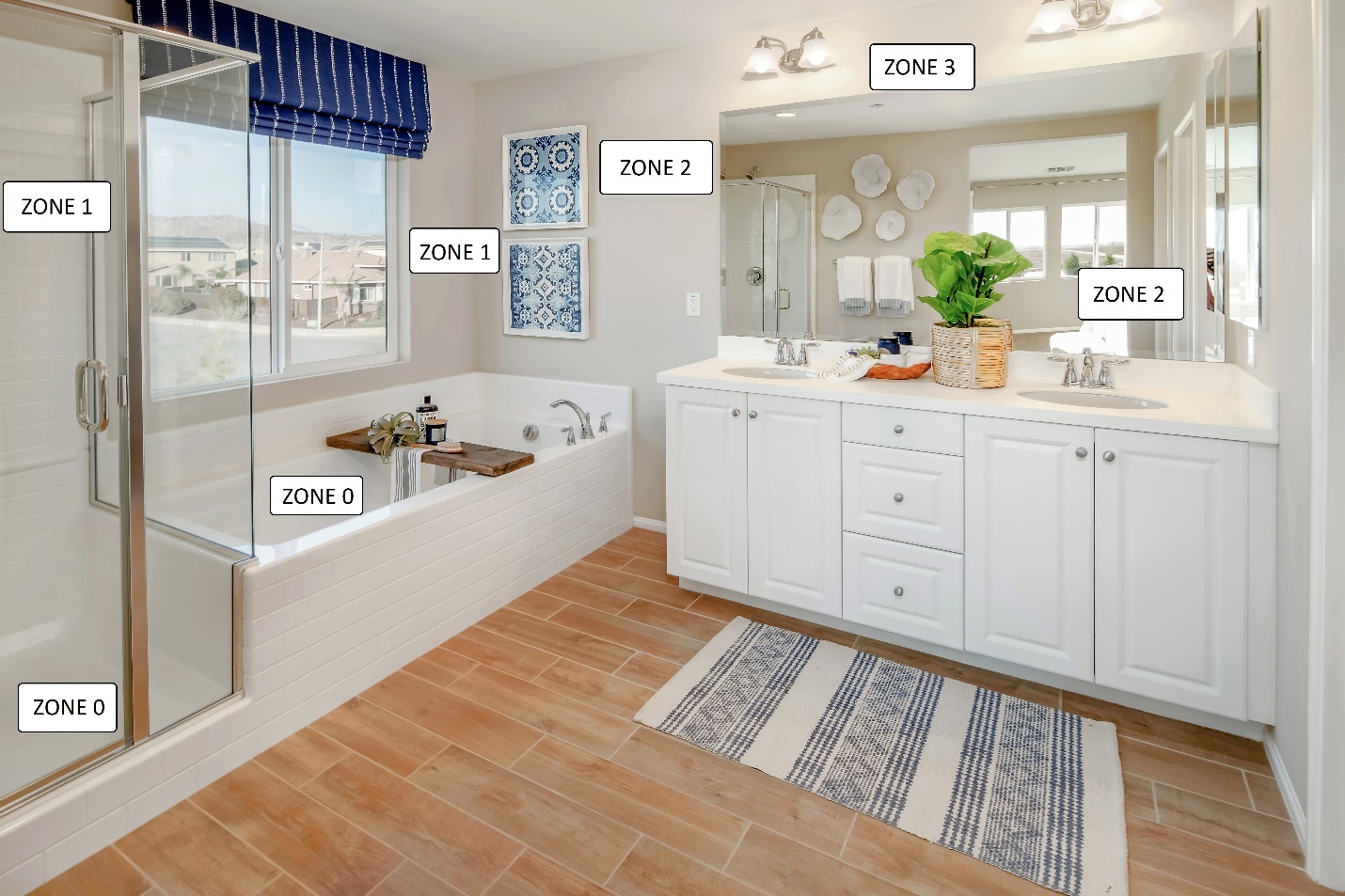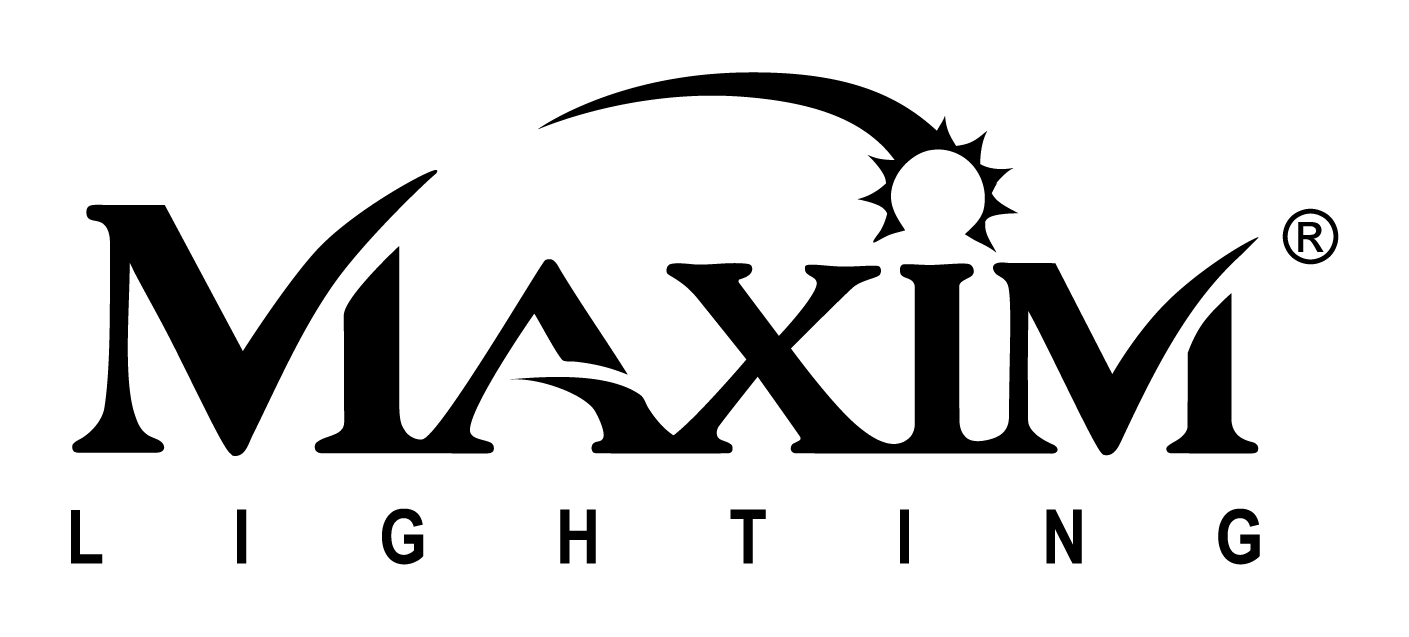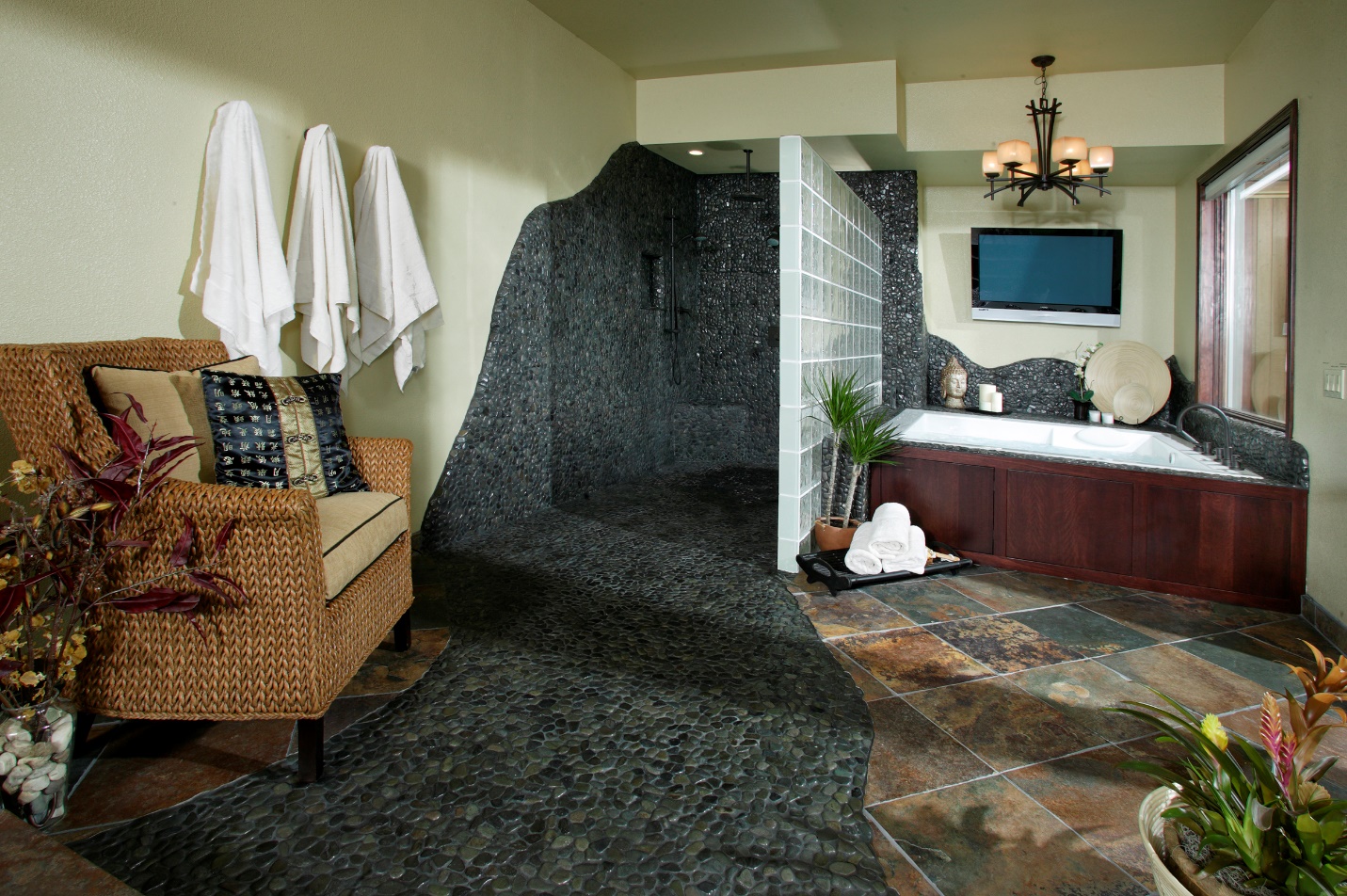Bath Ratings and Zones Explained
How to ensure your bathroom fixture is the right kind of waterproof
When purchasing a bathroom light or vanity, it is important to understand how much exposure to water the fixture can tolerate based on where you would like to have it installed. The best way to understand is by looking at its IP Code and Zone Designations. The IP Code, or Ingress Protection Code, shows us how well the enclosure of the fixture protects against water particles, while the Zone destination states how much tolerance is needed based on the location
The Rule of thumb for IP code is the higher the number, the better the protection.
First Digit - The first digit indicates the level of protection that the enclosure provides against access to hazardous parts (e.g., electrical conductors, moving parts) and small particles. The numerical ratings are 0-6, with zero offering no protection and six offering total protection.
Second Digit - The second digit indicates the level of protection that the enclosure provides against the presence of water or other liquids. This can also include non-direct forms of contact, i.e. misting, dripping, and submersion. These numerical ratings are 0-8, with zero offering no protection and eight offering total protection.
Zones:


| Zone 0 | The area inside the bathtub or shower. Any fitting used in this zone must be low voltage (maximum: 12v) and be rated at least IP67, which is total immersion proof. |
| Zone 1 | The area above the bath up to a height of 2.25m from the floor. In this zone, a minimum rating of IP44 is required. If the fitting is 240v, then a 30ma residual current device (RCD) must also be used to protect the circuit in this zone. |
| Zone 2 | The area stretching 0.6m outside the perimeter of the bath and to a height of 2.25m from the floor. In this zone, an IP rating of at least IP44 is required. Also, it is good practice to consider the area around a sink (within a 60cm radius of any tap) to be considered as Zone 2. |
| Zone 3 | Anywhere outside zones 0, 1, and 2 (subject to specific limits) and where no water tap is likely to be used. No IP rating is required. In addition to the above, if there is a likelihood of water taps being used for cleaning purposes in Zones 1, 2, and 3 then a fitting rated a minimum IP65 must be used. |
There are numerous combinations of IP ratings, however, the most common
ones are IP67, IP65, IP44, and IP20. Be sure to check for IP and Zone ratings prior
to purchasing a light fixture for your bathroom and always have the installation
done by a lighting professional.
To view Maxim Lighting’s Bathroom Lighting collections, click here.
To view Maxim Lighting’s Bathroom Lighting collections, click here.




